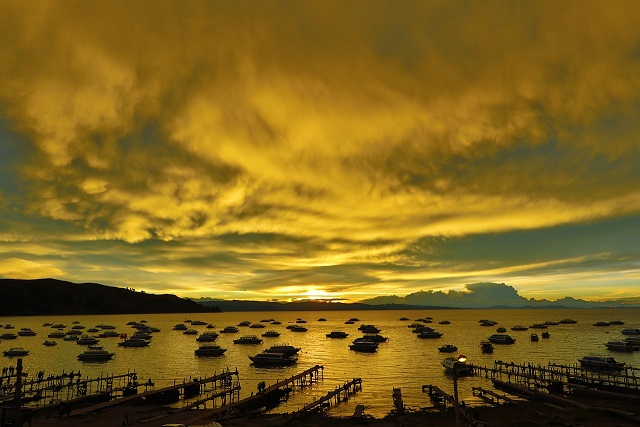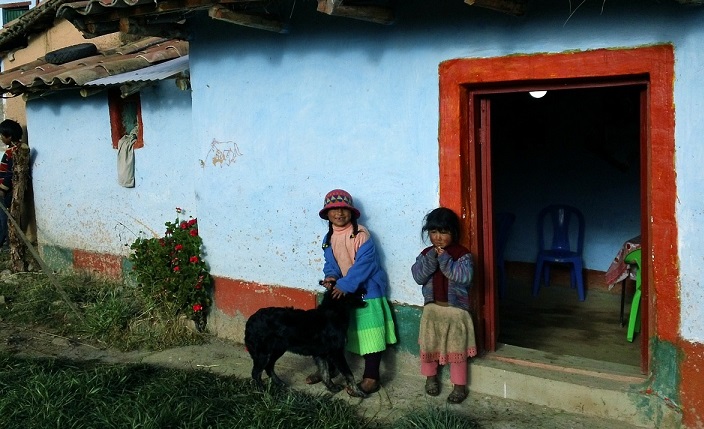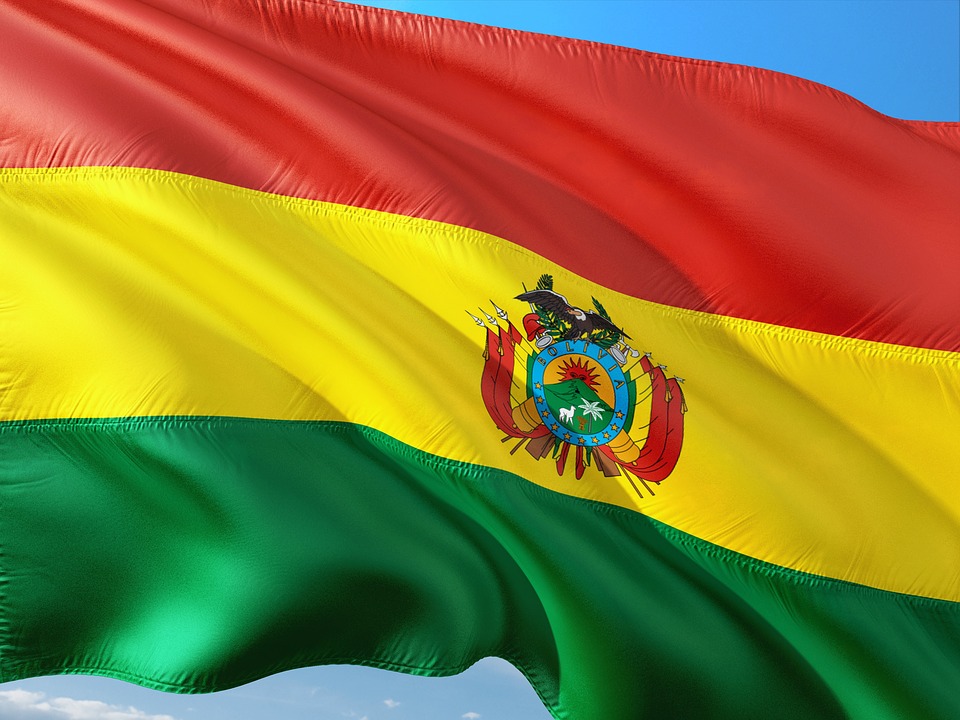Officially known as Our Lady of Peace, this is not only the seat of government and the Plurinational Assembly of Bolivia, but also the city of curious contrasts.
 Mario Hubert Garrido
Mario Hubert Garrido
For the author of these lines who retraces his steps of more than five years ago, there is nothing more truthful than that declaration.
The truth is that whatever the time of year, you can find spring in the early morning, the heat of summer in the afternoon followed by autumn and in the early hours of the morning the cruelest of winters with the lowest temperatures. For this reason, the people of La Paz usually leave their homes for work or go for a walk with all types of clothes plus the traditional umbrella. Not doing so means facing the most unsuspected climatic assaults with no defence other than the body or self-resignation. But La Paz, founded in 1548 by Alonso de Mendoza in the high plateau locality of Laja as a place of rest on the route between Potosí and Cusco, is also a uniquely characteristic town.
Steep streets that seem to climb to the sky contrast with wide undulating avenues all meeting at the same point. Just this year, its three new “Triplet” Bridges were constructed which magically link its steepest hills. In La Paz, the traditional and the modern come together, as does the ethnic and cultural diversity of its people.
An example is the unforgettable Murillo Square, the heart of this large city, where Kilometre Zero is situated – in its south corner – and is surrounded by Government headquarters and the parliament (national monuments), along with the ministry of foreign affairs and La Paz Cathedral.
For the foreign visitor, La Paz is also means the Alley of Jaén, formerly Kaurd Kancha or the llama market which is now lucky to be a lively museum in which past and present come together.
Every stone recalls times in which merchants from different regions carried out their trade of in the animals typical of the Bolivian high plains (the altiplano), next to the numerous museums erected on both sides.
These days, it is well known as Apolinar Jaén Street – in honour of the person from Oruro who inspired the freedom fight against the dominant Spanish colonialists in the black villages of Yungas. He ended surrounded by renowned characters like Pedro Domingo Murillo from mestizo society.
 The old house of the leader of the Bolivian independence movement became one of the numerous museums that attract thousands of foreign visitors, nationals and school children to the alley, which starts in Indaburo Street and opens out into Sucre Avenue.
The old house of the leader of the Bolivian independence movement became one of the numerous museums that attract thousands of foreign visitors, nationals and school children to the alley, which starts in Indaburo Street and opens out into Sucre Avenue.
Jaén, in terms of its length, is enormous by the incalculable historical contents that it has accumulated.
Some people prefer to start the route from Riosinho Park and turn their sights towards the door of the Musical Instrument Museum of Bolivia, created in 1962 and in which can be found the Charango Theatre.
A little further along, the charming Ethno-Cultural Museum contains evidence that conserves the distinctive heterogeneous character of the inhabitants of this Amazonian-Andean territory, as well as the Museum of Precious Metals or Gold which offers a journey through monetary history.
This last museum was once the home of Murillo´s companion in the Revolution of 1809, whose name the street took, and holds artefacts made of gold, silver, copper, bronze and ceramics of the Aymara, Mollo, Wankarani, Tiwanaku, Chiripa and Inca cultures.
But La Paz is also the Sacred Lake of the Incas or Titicaca, a body of water situated on the plateau of the El Collao province in the Central Andres at an average height of 3,812 metres above sea level, between the territories of Bolivia and Peru.
It is the highest navigable lake in the world and occupies 19th place for surface area in the world covering some 8,562km2 and a maximum depth of 281 metres.
The glaciers of the Apolobamba mountain range and those of La Paz feed the lake. Along the northern banks of Titicaca stand the majestic colossal peaks of the Bolivian Andes, eternally covered with snow.
Another of La Paz´s most attractive places is the snowy Illimani (the golden eagle in the Aymara language), whose height of 6,462 metres allows it to be seen from anywhere in the city.
The mountainous massif is 8km long and four of its peaks are over 6,000 metres.
 The people of La Paz are also proud of the archeological site of Tiwanaku situated on the high plains of the west bank of the river of the same name.
The people of La Paz are also proud of the archeological site of Tiwanaku situated on the high plains of the west bank of the river of the same name.
Tiwanaku was the centre of the Tiahuanacota civilisation, a pre-Inca culture whose economy was based in agriculture and livestock farming and spanned the territories of the El Collao plateau to the west of Bolivia, the north of Chile and the south of Peru. It radiated its technological and religious influence towards other more contemporary civilisations.
The city of Tiwanaku is characterised by its architecture decorated with reliefs and engraved drawings.
It is composed of seven important architectural constructions: Kalasasaya, the Semi-Subterranean Shrines, the Akapana Pyramid, the Sun Door and Puma Punku.
The Tiwanaku Empire, the longest surviving culture in South America above whose Andean region it expanded, disappeared according to the best established theory due to a century of drought which reduced the size of the earlier Great Minchin or Ballivian Lake by five times, leaving it within the boundaries of Lake Titicaca, which is now shared by Bolivia and Peru.
According to the last census in 2001, the population of La Paz was over 900,000 inhabitants in the whole metropolitan area.
The centre of the city is approximately 3,650 metres above sea level and together with the city of El Alto, forms the second biggest and most populated urban settlement in Bolivia.
The full name designated by the Spanish conquistadors was Our Lady of Peace, establishing itself as the third city after that of Sucre (1538) and Potosí (1545).
Its name commemorates the restoration of peace after the civil war that followed the revolt of Gonzalo Pizarro against Blasco Núñez Vella, first viceroy of Peru.
La Paz was founded on the 16th July 1809 with Pedro Domingo Murillo and other local martyrs against the Spanish Empire and established the first free government of Hispanic America, forming a Board for the Rights of the People on the 22nd July 1809.
After the federal war of 1898-1899 between the Liberals of the north and the Conservatives of the south, La Paz became the de facto head of government through its executive and legislative powers.
In conjunction with the director of La Paz Municipal Heritage, Ximena Pacheco, a Restoration Plan of Historical Areas is being undertaken, which includes 25 combined properties of patrimonial value in different areas of La Paz. PL.












.jpg)












